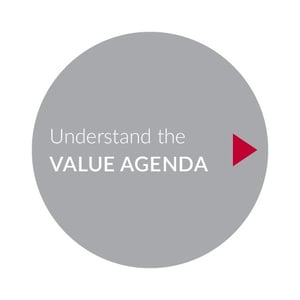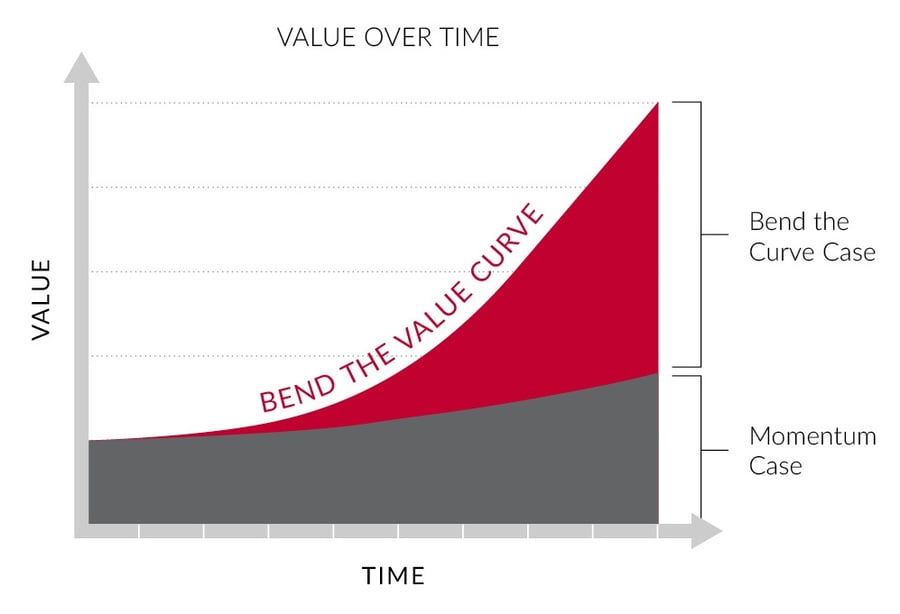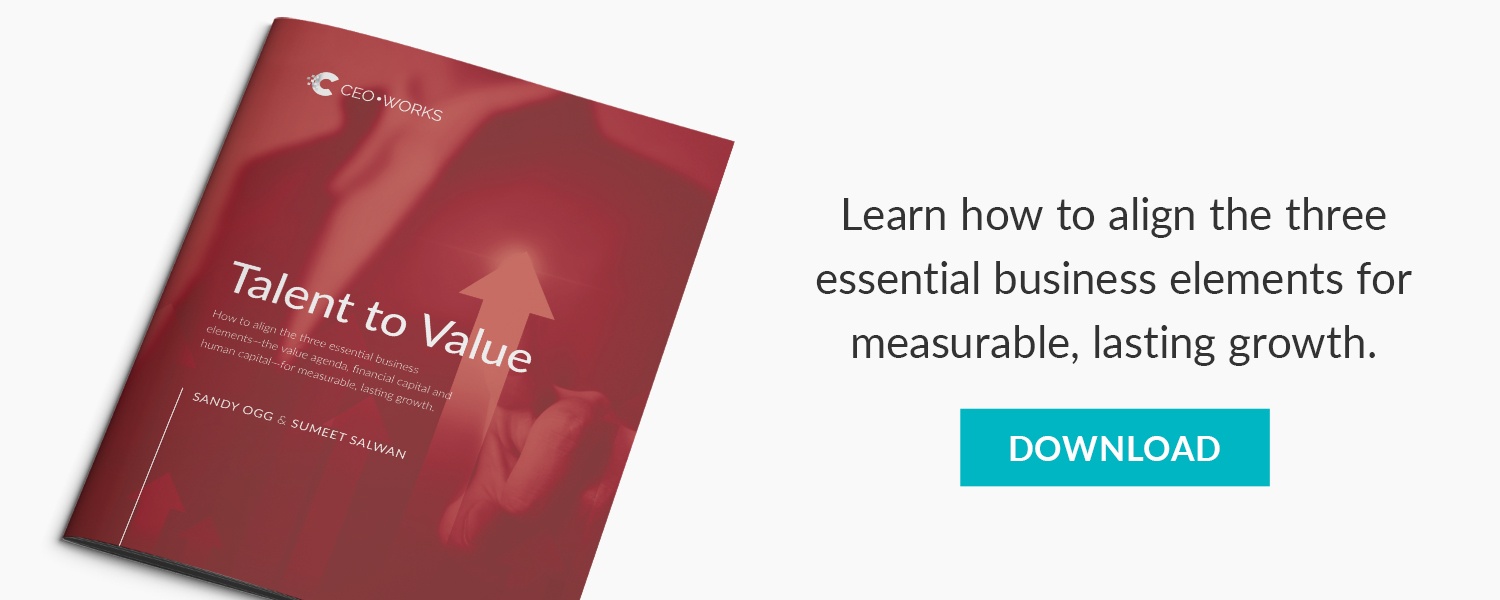Welcome to part one of our five-part series on Connecting Talent to Value.
If you’re a CEO, chances are somewhat slim that you know exactly which roles in your organization are absolutely critical to realizing your company’s value agenda, who you have in them, and how well they are doing. In these times of disruptive change, can your organization afford to remain in the dark about what's really driving value?

Often CEOs believe their job is to set direction and strategy, to orchestrate execution and manage performance. Talent is largely the domain of human resources and the CHRO; value is predominantly the domain of finance and the CFO. Or are they?
Rarely do we three C-suite leaders—the CEO, CFO and CHRO—come together to flag the specific roles in our company that drive value. And even if we do, it is even more rare that we monitor the incumbents in those specific roles for their contributions to value, their level of engagement, and their capacity. Yet their contributions are what we are relying on to secure our performance today and make future growth possible.
Not having enough of the right talent where it matters is like trying to run a Ferrari with cheap gas in the tank. It’s a formula for frustration and poor performance.
Historically, we have treated roles, contributions, and capacity as separate activities. Roles get reviewed under the banner of organizational design; individual contributions and engagement get assessed as part of performance management; and capacity usually gets looked at in terms of the company’s talent pipeline. CEOs also spend time talking with board members about key role succession at the top of the organization, often forgetting to invest the time and attention necessary to ensure they have the right talent wherever significant value can be created in the organization. These practices, although well seasoned, just don’t work well when it comes to optimizing the company’s performance. A very real opportunity to accelerate our returns is hidden in plain sight. Continue looking at talent in its component parts, separate from value, and we will not only miss out on that opportunity. We will also risk the future.
It’s time to get practical about how we connect talent to value.
Value Comes First

As CEO, you set your company’s agenda. You, with input from your leadership team, make a set of strategic choices that will focus your organization’s talent on work that will generate value over time. This value agenda intentionally identifies two sources of value: the Momentum Case and the Bend The Curve Case. The most effective value agendas artfully balance both of these cases at once.
The Momentum Case defines the value expected from the company assuming it continues to do what it does well. As a part of the value agenda, this “business-as-usual” value (what I call today’s sources of value) may see either growth or contraction, depending upon market conditions and disruptions in the industry or the countries in which the company operates.

The Bend The Curve Case defines the possible value the company may realize if it correctly anticipates what people will value tomorrow and then successfully executes a few key strategic initiatives to deliver exactly that. As a part of the value agenda, this aspirational value (what I call tomorrow’s sources of value) strikingly bends the value curve upwards through the implementation of new business models, products, markets, efficiency programs and/or other improvements to the business. Leaning factories and refining procurement, for example, improve the business so that it can more efficiently deliver on both the business-as-usual and the aspirational components of the value agenda.
During my days at the Blackstone Group, I had an opportunity to really fine-tune my understanding of the impact of talent on the value agenda. When the world’s largest private equity firm hired me, they already had an enviably high success rate when it came to improving the businesses they invested in. What intrigued me was that they had specifically brought me on board to help improve their success rate on the talent side of the equation. In my previous roles with Motorola and Unilever, I’d used value-centric approaches to manage talent and the benefits had been obvious. The first thing I did at Blackstone was conduct a comprehensive assessment of what had and hadn’t worked when it came to leadership talent in approximately 180 portfolio companies. Specifically, I looked at historical data from 80 companies that had been in their portfolio in years past and approximately 100 more in which they were currently invested.
What I noticed right off the bat was that, of the companies that had started to seriously bend the value curve upwards in their first 12 months, eighty percent of them had produced successful outcomes. Quickly getting the right talent in the key leadership roles early in the game was one of the factors that helped them achieve such fast starts. Most of these early curve benders went on to generate 2.5 times or greater the return on Blackstone’s initial investment.
Looking more closely, I saw that 22 of Blackstone’s most successful portfolio companies went even further. They didn’t fill those critical leadership roles with “developing” players: they interpreted them as value “hot spots” and intentionally filled them with talent that had the right capabilities and experience to generate the value everyone was counting on them to deliver. The Blackstone team, in these success cases, hadn’t hesitated to hire new C-suite talent when necessary and move senior executive leaders into roles where they were a better match with the work to be done. The financial results their companies achieved told me this was the way to go.
Fast forward a few years to shortly after I began working with McKinsey and they also began noticing the benefits of the rapid redeployment of key talent. A 2017 McKinsey survey found that public companies who moved quickly on reassigning high performers to work on the organization’s most critical strategic priorities were 2.2 times more likely to outperform their competitors in terms of total returns to shareholders than respondents who moved slowly.*
Continue reading Identify the Critical Roles, the second part of the Talent to Value series.

- -
*Results of 628 public company respondents in McKinsey survey of 1,820 participants on their talent management practices conducted November 14 through 28, 2017. Referenced in Mike Barriere et al’s “Linking talent to value”, McKinsey Quarterly, April 2018. Accessed May 16, 2018 at https://www.mckinsey.com/business-functions/organization/our-insights/linking-talent-to-value.

